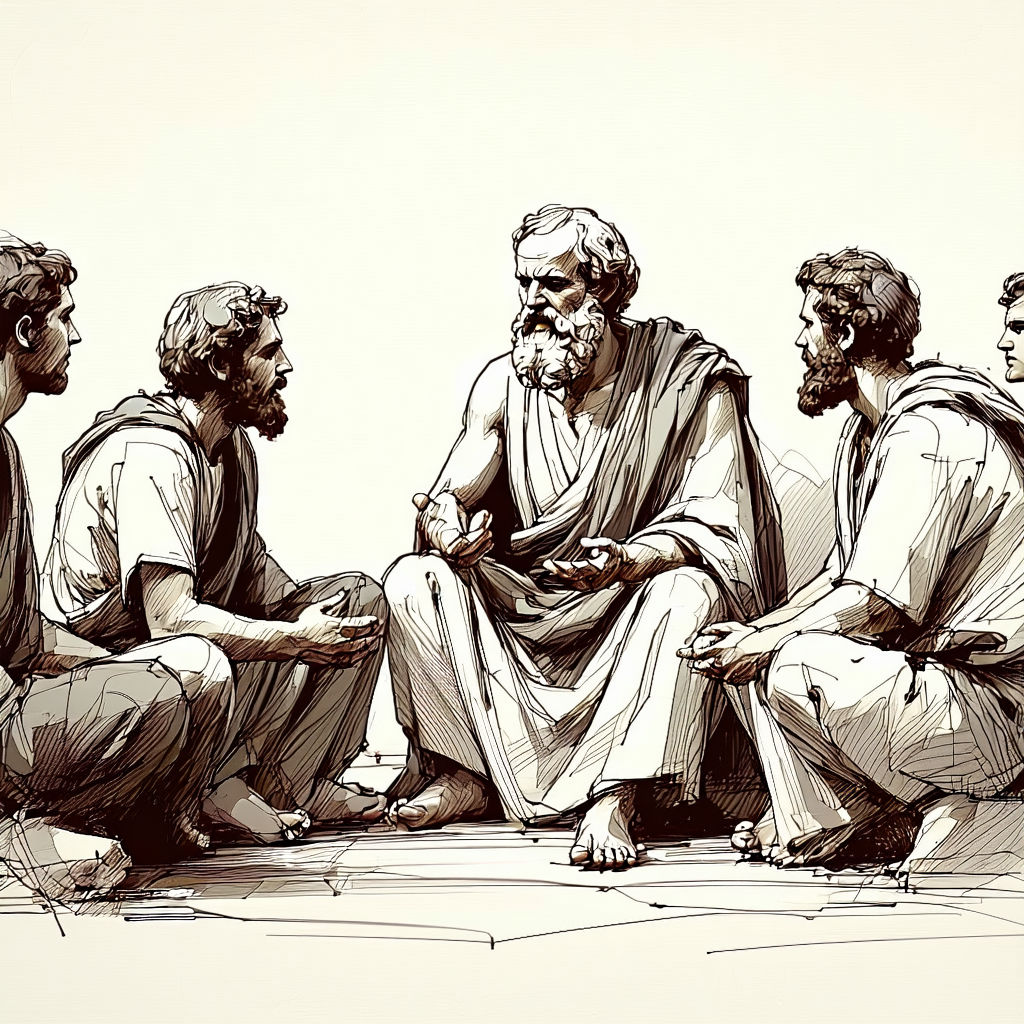How the Socratic Method Enhances Critical Thinking in Business

What if the key to unlocking your team's untapped potential was hidden in asking the right questions?
Table of Contents
- Introduction
- What is the Socratic Method
- Benefits of the Socratic Method in Business
- Case Studies of the Socratic Method in Business
- Challenges of Implementing the Socratic Method in Business
- Conclusion
- Key Takeaways
- FAQ
Introduction
The Socratic method, a centuries-old approach to questioning and dialogue, has been widely used in educational settings to encourage critical thinking and intellectual curiosity. This timeless technique is equally valuable in the business world, where critical thinking is essential for making informed decisions and driving innovation. By adopting the Socratic method, business leaders and teams can cultivate a culture of inquiry, challenge assumptions, and develop well-reasoned solutions to complex problems.
What is the Socratic Method
The Socratic Method is a teaching and dialogue approach rooted in the practices of the ancient Greek philosopher Socrates. It emphasizes asking open-ended, thought-provoking questions to stimulate critical thinking and uncover underlying assumptions. Rather than providing answers, this method encourages participants to engage in reflective inquiry, leading to deeper understanding.
Origins and Core Principles
Socrates believed that questioning fosters intellectual growth. His method involves structured dialogues where ideas are rigorously examined. The process often begins with a central question, followed by a series of inquiries that challenge assumptions, clarify concepts, and reveal contradictions. This iterative questioning helps refine thoughts and encourages participants to arrive at well-reasoned conclusions.
Application in Modern Contexts
Today, the Socratic Method finds relevance beyond philosophy. In business, leaders use it to guide teams through complex problem-solving, identify risks, and foster innovation. This method cultivates a culture of curiosity and accountability, where individuals feel empowered to question and contribute.

Benefits of the Socratic Method in Business
The Socratic method is a powerful tool in enhancing critical thinking in business. This method involves asking a series of questions to encourage critical thinking and draw out ideas and underlying presumptions. The Socratic method has been widely used in law schools, as depicted in the movie "The Paper Chase" (1973).
Encourages Critical Thinking
The Socratic method encourages critical thinking by prompting individuals to analyze information, identify patterns, and develop well-supported arguments. By asking questions, it helps to identify and challenge assumptions, leading to a deeper understanding of the subject matter.
Fosters Effective Communication
The Socratic method promotes effective communication by encouraging individuals to articulate their thoughts and ideas clearly. It helps to develop strong verbal and written communication skills, which are essential in business.
Develops Problem-Solving Skills
The Socratic method helps to develop problem-solving skills by encouraging individuals to think creatively and develop innovative solutions. By analyzing complex problems and identifying key issues, individuals can develop effective solutions.
Enhances Analytical Skills
The Socratic method enhances analytical skills by encouraging individuals to evaluate information, identify patterns, and develop well-supported arguments. It helps to develop strong analytical skills, which are essential in business decision-making.
Case Studies of the Socratic Method in Business
The Socratic method has been successfully applied in various business settings to foster critical thinking and problem-solving skills. Here are a few notable examples:
McKinsey & Company's Problem-Solving Approach
McKinsey & Company, a renowned management consulting firm, employs the Socratic method to help clients tackle complex business problems. By asking a series of questions, McKinsey's consultants encourage clients to think critically and arrive at their own solutions.
IBM's Socratic Approach to Leadership Development
IBM uses the Socratic method as a key component of its leadership development programs. Through a series of guided questions, participants are encouraged to reflect on their own leadership styles and develop critical thinking skills.
CompanyApplication of Socratic MethodMcKinsey & CompanyProblem-solving approach with clientsIBMLeadership development programs
These case studies demonstrate the effectiveness of the Socratic method in enhancing critical thinking skills in business settings. By encouraging individuals to think critically and arrive at their own solutions, organizations can foster a culture of innovation and problem-solving.
Challenges of Implementing the Socratic Method in Business

The Socratic Method, while effective, poses unique challenges in a business context. One of the primary hurdles is the time-intensive nature of this approach. Encouraging deep, reflective questioning can slow down decision-making processes, which may clash with the fast-paced demands of modern business environments. Companies often prioritize quick solutions over prolonged discussions, creating tension for teams attempting to adopt this method.
Balancing Hierarchies and Open Dialogue
Another obstacle lies in navigating organizational hierarchies. Employees may hesitate to question authority figures, fearing repercussions or appearing disrespectful. This reluctance can stifle the open dialogue essential to the Socratic Method. Building a culture that values curiosity and constructive critique requires deliberate effort and strong leadership.
Skill Gaps and Misapplication
The method also demands a high level of facilitation skill. Without proper training, leaders may misapply the technique, leading to confusion or frustration among team members. Questions that lack focus or clarity can derail conversations, making it harder to achieve actionable insights.
While these challenges are significant, addressing them thoughtfully can unlock the potential of the Socratic Method to foster critical thinking and innovation in business settings.
Conclusion
The Socratic Method is a powerful tool for enhancing critical thinking in business. By encouraging individuals to question assumptions and explore different perspectives, this method fosters a culture of curiosity and collaboration. As demonstrated in the video The Socratic Method: What It is and How to Use It in the Classroom, this approach can be applied in various settings, from classrooms to boardrooms. By incorporating the Socratic Method into business practices, organizations can cultivate a more informed, adaptable, and innovative workforce, ultimately driving success in an ever-changing business landscape.
Key Takeaways
The Socratic Method is a powerful tool for enhancing critical thinking in business. By adopting this approach, organizations can foster a culture of inquiry, promote active learning, and develop more effective problem-solvers. Key benefits include:
- Improved critical thinking and analysis skills
- Enhanced collaboration and communication
- Increased creativity and innovation
- Better decision-making and problem-solving capabilities
FAQ
What is the Socratic Method?
The Socratic Method is a teaching and inquiry technique rooted in asking open-ended questions. It fosters critical thinking by encouraging participants to analyze their assumptions, clarify their beliefs, and develop well-reasoned conclusions.
How does it apply to business?
In business, the Socratic Method enhances problem-solving and decision-making. By framing thoughtful questions, leaders can engage teams in deeper discussions, identify blind spots, and refine strategies. It promotes active collaboration and ensures decisions are grounded in logic and evidence.
Can it improve leadership?
Yes, applying this method cultivates strong leadership. Leaders who ask probing questions inspire innovation, build trust, and empower employees to think independently. This approach creates a culture of continuous learning and adaptability.